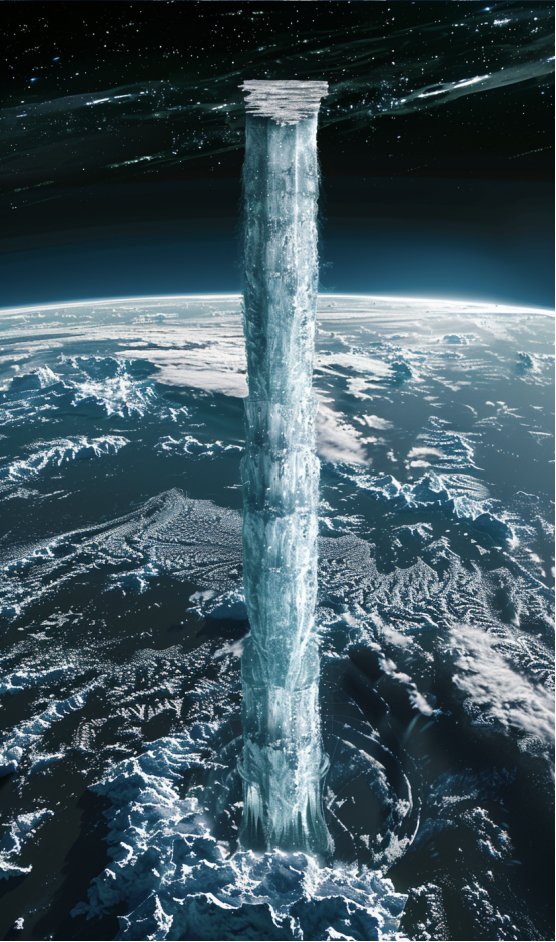Ice
Types of Ice
| Type | Crystal Structure | Density (g/cm³) | Formation Temperature (K) | Formation Pressure (GPa) | Observed/Suspected in Solar System |
|---|---|---|---|---|---|
| Ice Ih | Hexagonal | 0.92 | 273 | 0.001 | Yes (Mars, etc.) |
| Ice II | Rhombohedral | 1.18 | < 253 | 0.2-0.8 | Suspected (moons of gas giants) |
| Ice III | Tetragonal | 1.16 | 250-350 | 0.2-0.35 | Suspected (moons of gas giants) |
| Ice IV | Rhombohedral (metastable) | - | - | - | No |
| Ice V | Monoclinic | 1.27 | 253-273 | 0.5-1.0 | Suspected (moons of gas giants) |
| Ice VI | Tetragonal | 1.31 | 273-355 | 0.8-2.2 | Suspected (moons of gas giants) |
| Ice VII | Cubic | 1.65 | >355 | 2.0-60.0 | Suspected (Exoplanets) |
| Ice VIII | Tetragonal | 1.52 | < 273 | 2.1-60.0 | Suspected (Interior of ice giants) |
| Ice IX | Tetragonal | 1.16 | 140-165 | 0.8 | No |
| Ice X | Orthorhombic | 2.5 | >70 | 70 | Suspected (Interior of planets) |
| Ice XI | Hexagonal (ordered Ih) | 0.92 | < 72 | - | No |
| Ice XII | Tetragonal | 1.30 | 230-273 | 0.3-0.5 | No |
| Ice XIII | Monoclinic | 1.29 | 130-250 | 0.3-0.5 | No |
| Ice XIV | Orthorhombic | 1.28 | 80-140 | 0.8-1.0 | No |
| Ice XV | Monoclinic | - | < 130 | 0.8-1.5 | No |
| Ice XVI | Cubic (sII clathrate) | 0.81 | - | - | No |
This table integrates various aspects of the different ice types, including their crystal structures, densities, conditions for formation, and their observation or speculation within the solar system.
Ice Ih is “ordinary ice”.
Compressing Water to Form Ice
Compressing water enough can turn it into ice. This occurs under high-pressure conditions that change water’s physical state without the need for lowering the temperature. For example, Ice VI and Ice VII are forms of ice that can form at high pressures above 1 GPa (gigapascal). These ice forms have different crystal structures and are denser than liquid water.
To make ice from water at room temperature (around 20°C or 293 K), you would need pressures significantly above atmospheric pressure. Ice VI forms at pressures above about 1 GPa (gigapascal), which is approximately 10,000 times atmospheric pressure (1 atm is approximately 0.1 MPa). Therefore, to create ice at room temperature, you would need to apply a pressure of over 10,000 atmospheres.
The pressure of 1 GPa is not typically feasible for common applications; it’s more within the realm of scientific experiments and industrial processes. Converting 1 GPa to pounds per square inch (psi) gives
\[1 \text{GPa} = 10^9 \, \text{Pascals} = 10^9 \times \frac{1}{6894.76} \, \text{psi} = 145,038 \, \text{psi}.\]
To create ice at room temperature, you need to apply a pressure of about 145,038 psi (about 72.5 tons per square inch). For context, a common grade of steels pipe, like ASTM A53, has an allowable stress of around 20,000 to 35,000 psi.
To achieve a pressure of 1 GPa using a column of water, we can use the relationship between height, pressure, and fluid density. The pressure exerted by a fluid column is given by
\[P = \rho g h\]
where:
- \(P\) is the pressure (in pascals),
- \(\rho\) is the density of the fluid (in kilograms per cubic meter; for water, it’s approximately \(1000 \, \text{kg/m}^3\) at room temperature),
- \(g\) is the acceleration due to gravity (approximately \(9.81 \, \text{m/s}^2\)),
- \(h\) is the height of the fluid column (in meters).
Rearranging for \(h\)
\[h = \frac{P}{\rho g}\]
and substituting \(P = 1 \, \text{GPa} = 1 \times 10^9 \, \text{Pascals}\), \(\rho = 1000 \, \text{kg/m}^3\), and \(g = 9.81 \, \text{m/s}^2\), we find that a column of water approximately 102 kilometers high is required to achieve a pressure of 1 GPa at its base. This is an impractically tall column, demonstrating the extreme pressure needed to form ice at room temperature.
Based on material provided by GPT4.

